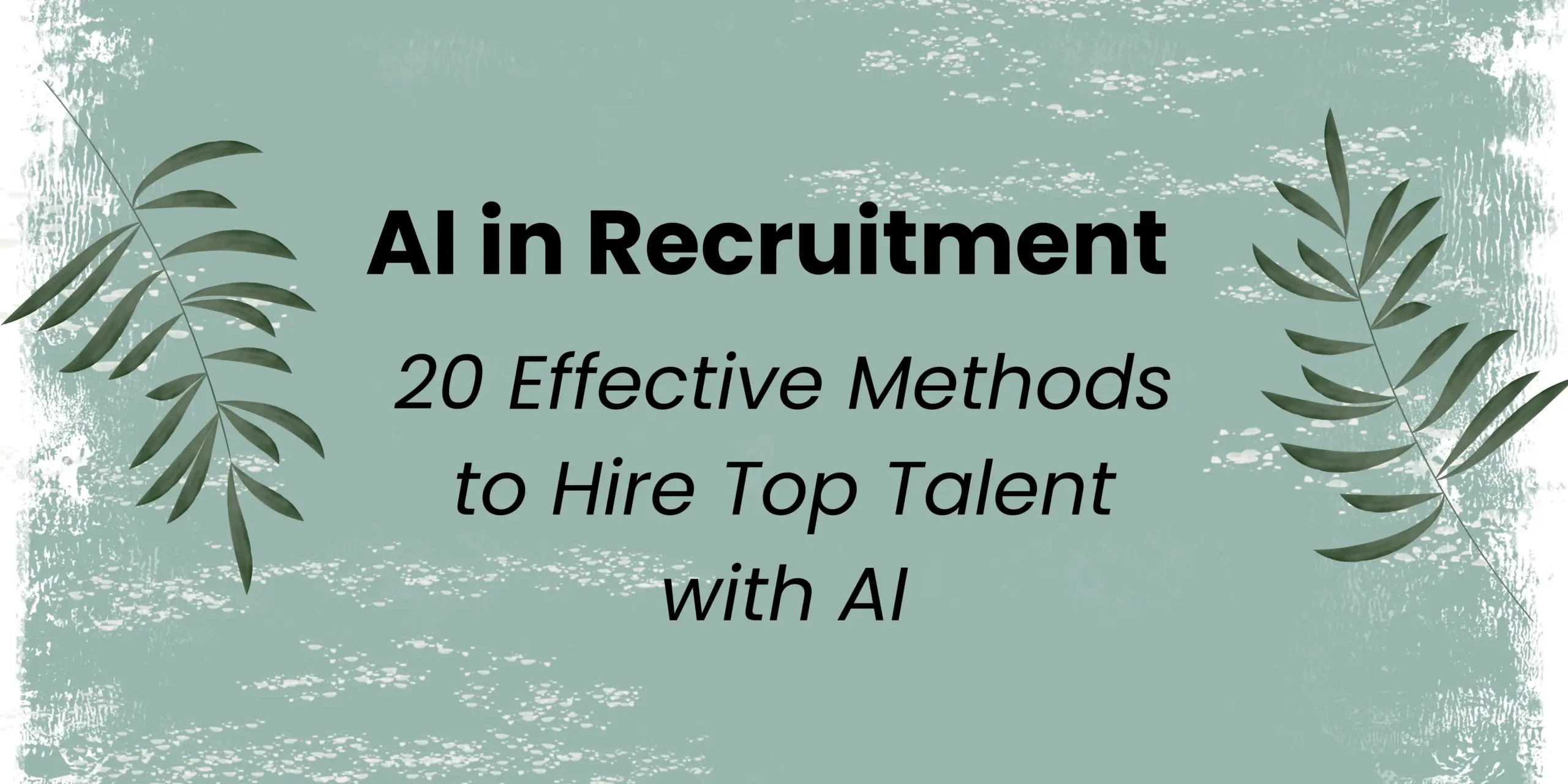- Are you sick and tired of putting in endless hours going through piles of resumes in an attempt to find the ideal candidate?
- Are you finding it difficult to organize interviews and manage application data because you’re buried in many spreadsheets and emails?
- Are you confused about where to concentrate your efforts to draw in top talent?
You’re not alone if you said “yes” to any of these questions. The hiring process may be a difficult and time-consuming process that is filled with difficulties and frustrations for many HR professionals. Finding and hiring the finest employee for your organization can be hampered by a number of pain points, from managing job advertising to screening applicants and guaranteeing compliance with legal standards.
However, what if there was a way to get over these obstacles and improve the efficiency of your hiring procedure? What if you could use technology to increase team member cooperation, automate repetitive tasks, and make better hiring decisions?
We’ll go into the detail about applicant tracking systems (ATS) and how they can completely transform your hiring process in this blog post. We’ll examine the salient characteristics of ATS systems and talk about how they resolve issues that HR professionals frequently encounter.
So take a seat back, relax, and get ready to learn how ATS may increase productivity and improve the hiring process.
What do you mean by ATS?
Applicant Tracking System (ATS) is a software that simplifies the hiring process by automating it from the point of job posting to the candidate hiring. Consider it HR professionals’ digital assistants, assisting with candidate data management and organization, process optimization, and efficiency gains.
To find and connect with top talent more easily, application tracking, storage, and management are all facilitated by applicant tracking systems (ATS) which act as centralized hubs for HR teams.
What are the Key Features of ATS?
The key features of the Application tracing system include:
1. Posting Job and its Distribution
As an HR manager, you can easily create and post job openings via a variety of channels with the help of ATS platforms. By automating the distribution of job adverts, ATS speeds the process in place of manually posting openings to several job boards and websites.
This guarantees top visibility for job opportunities and draws in a greater number of competent applicants.
2. Candidate Sourcing and Screening
One of ATS’s main features is its effectiveness in finding and selecting applicants. These systems sort through resumes and applications using advanced search algorithms, giving recruiters the ability to narrow down prospects according to particular standards like education, experience, and skills.
This frees up your time and energy to concentrate on speaking with the best candidates instead of spending it manually reviewing resumes.
3. Resume Parsing and Keyword Matching
Applicant tracking systems (ATS) automatically extract relevant resume data and cross-reference it with job descriptions. By doing this, bias and subjective decision-making are eliminated because recruiters are guaranteed to only view individuals who fulfill the precise requirements of the position.
You can swiftly and efficiently find the most qualified candidates by utilizing this feature of resume parsing and keyword matching.
4. Candidate Management
This feature helps to manage and arrange applicant data, such as applications, resumes, communication histories, interview notes, and feedback. This finds individuals who have already shown interest in the company, which helps organizations build a talent pipeline and shorten the time it takes to hire.
It also enables you to establish and maintain connections with potential recruits.
Recruiters can keep a talent pool which is a database of candidates who have not been selected this time but have potential and can be referred for future job openings.
5. Collaborative Hiring and Workflow Automation
These two concepts combine to make the hiring process more efficient and to improve team member communication. Multiple users can access and assess candidate profiles concurrently on applicant tracking systems (ATS), which removes the need for manual coordination and lowers the possibility of misunderstandings.
As an HR you can establish predetermined processes for every step of the hiring process with the help of workflow automation capabilities, which guarantee that activities are finished quickly and consistently.
6. Reporting and Analytics
ATS platforms offer strong reporting and analytics functionalities. Data-driven decision-making is crucial for efficient recruitment. Key recruitment indicators including time-to-fill, cost-per-hire, applicant demographics, etc. are produced in real time by these platforms.
You can analyze performance, spot patterns, and make well-informed decisions to maximize your hiring strategy by evaluating this data.
7. Compliance and Security
Ensuring compliance with legal and regulatory requirements is a top priority for HR teams, especially in industries with strict hiring regulations. ATS platform offers features designed to support compliance with data protection laws and ensure the security of candidate information.
These systems typically include built-in security measures such as data encryption, access controls, and audit trails to protect against unauthorized access and data breaches.
8. Integration with HRIS and Other Systems
To get the most out of an ATS platform and guarantee smooth data transfer across other HR systems, integration capabilities are crucial. ATS platform has integration with HRIS and external systems, like payroll and onboarding tools. This makes it possible for HR teams to concentrate their workflows and data, eliminate manual data entry, and build an HR ecosystem that is more effective and cohesive.
How does ATS help HR Managers?
HR managers can benefit from ATS platforms in a number of ways, including:
- Provides Efficiency: ATS technologies help you save time and effort by automating repetitive processes and optimizing workflows. This thus helps you to concentrate on strategic initiatives like employer branding and candidate engagement.
- Get Better Candidate Quality: HR managers can source and screen candidates more efficiently with the help of ATS platforms, which leads to better hires. You can find applicants who suit the organization’s culture and meet the role’s specific needs by using comprehensive search and filtering tools.
- Enhances Collaboration: ATS solutions with collaborative features let HR team members communicate and work together more effectively, keeping everyone informed and on the same page during the hiring process. This lowers the possibility of misunderstandings and guarantees a more seamless hiring process for hiring managers and candidates.
- Helps in Making Data-Driven Decisions: HR managers can track important recruitment metrics, see trends, and make well-informed decisions to maximize their hiring strategies with the help of ATS platforms’ useful data and analytics. You can use these insights to pinpoint areas in need of development and make the necessary adjustments to boost recruitment results.
- Stay Compliant with Laws and Increase Security: Applicant tracking systems (ATS) come equipped with capabilities that promote adherence to data protection regulations and guarantee the security of candidate data. You can now rest easily knowing that your organization’s data is secure and that it is following all applicable laws and regulations.
- Reduces Errors: HR managers may concentrate their data and workflows by using ATS solutions’ easy integration with other HR systems. This makes it unnecessary to manually enter data and lowers the possibility of mistakes, creating an HR environment that is more effective and unified.
Conclusion
Applicant tracking systems are essential to modern recruitment because they give HR managers the capabilities and tools they require to attract top talent, optimize their workflows, and make data-driven choices. Organizations can create high-performing teams that promote corporate success and get a competitive edge in today’s competitive talent market by utilizing the essential features of applicant tracking systems.
Zimyo’s Applicant Tracking System (ATS) streamlines the hiring process by gathering and classifying candidate data from several online job portals, including social media and websites. It helps HR professionals save time and money by automating operations like posting job vacancies across different channels, resume screening, parsing, and many more. It helps you to make the right data-driven decision with its powerful analytics and reporting features that give you real-time data like application received by source, interview stage status report, time to hire, etc.
Beyond its ATS functionality, Zimyo offers a comprehensive suite of HR solutions, including HRMS and payroll management, catering to the needs of small and medium enterprises. Zimyo offers cost-effective services without sacrificing quality. The platform’s user-friendly interface, real-time tracking, and integration capabilities have earned it praise from notable organizations like Sela, The Pet Shop, Petrochem, Udrive, Jeebly, Capital Motion, etc., making it a preferred choice for efficient recruitment and HR management.




